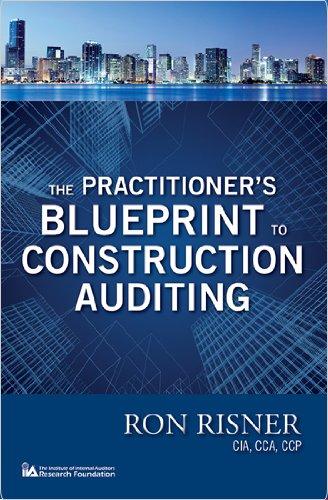Question
Bakerston Company is a manufacturing firm that uses job-order costing. The company's inventory balances were as follows at the beginning and end of the year:
| Bakerston Company is a manufacturing firm that uses job-order costing. The company's inventory balances were as follows at the beginning and end of the year: |
| Beginning Balance | Ending Balance | |||||
| Raw materials | $ | 11,800 | $ | 15,600 | ||
| Work in process | $ | 32,400 | $ | 14,000 | ||
| Finished goods | $ | 102,000 | $ | 122,000 | ||
| The company applies overhead to jobs using a predetermined overhead rate based on machine-hours. At the beginning of the year, the company estimated that it would work 17,700 machine-hours and incur $265,500 in manufacturing overhead cost. The following transactions were recorded for the year: |
| Raw materials were purchased, $410,000. | |
| Raw materials were requisitioned for use in production, $406,200 ($385,000 direct and $21,200 indirect). | |
| The following employee costs were incurred: direct labor, $330,000; indirect labor, $75,000; and administrative salaries, $159,000. | |
| Selling costs, $112,000. | |
| Factory utility costs, $29,000. | |
| Depreciation for the year was $123,000 of which $111,000 is related to factory operations and $12,000 is related to selling, general, and administrative activities. | |
| Manufacturing overhead was applied to jobs. The actual level of activity for the year was 14,500 machine-hours. | |
| Sales for the year totaled $1,286,000. |
| Required: | |
| a. | Prepare a schedule of cost of goods manufactured in good form. (Do not round predetermined overhead rate. Input all amounts as positive values. Omit the "$" sign in your response.) |
| Schedule of Cost of Goods Manufactured | ||
| Direct materials: | ||
| (Click to select)Beginning finished goods inventoryEnding work in process inventoryEnding raw materials inventoryBeginning work in process inventoryBeginning raw materials inventory | $ | |
| (Click to select)DeductAdd : (Click to select)Ending work in process inventoryBeginning work in process inventoryPurchases of raw materialsRaw materials inventory, endingFinished goods inventory, beginning | ||
| Total raw materials available | ||
| (Click to select)AddDeduct : (Click to select)Beginning work in process inventoryPurchases of raw materialsBeginning raw materials inventoryEnding raw materials inventoryEnding work in process inventory | ||
| Raw materials used in production | ||
| (Click to select)AddDeduct : (Click to select)Indirect laborRaw materials inventory, beginningDirect materialsDirect laborIndirect materials included in manufacturing overhead | ||
| (Click to select)Purchases of raw materialsEnding work in process inventoryDirect laborRaw materials inventory, beginningRaw materials inventory, ending | ||
| (Click to select)Manufacturing overhead cost applied to work in processDirect laborRaw materials inventory, beginningPurchases of raw materialsRaw materials inventory, ending | ||
| Total manufacturing cost | ||
| (Click to select)AddDeduct : (Click to select)Purchases of raw materialsEnding work in process inventoryBeginning work in process inventoryRaw materials inventory, beginningRaw materials inventory, ending | ||
| (Click to select)AddDeduct : (Click to select)Purchases of raw materialsRaw materials inventory, endingEnding work in process inventoryBeginning work in process inventoryRaw materials inventory, beginning | ||
| Cost of goods manufactured | $ | |
| b. | Was the overhead underapplied or overapplied? By how much? (Do not round predetermined overhead rate. Input the amount as a positive value. Omit the "$" sign in your response.) |
| Manufacturing overhead (Click to select)underappliedoverapplied | $ |
| c. | Prepare an income statement for the year. The company closes any underapplied or overapplied overhead to Cost of Goods Sold. (Input all amounts as positive values. Omit the "$" sign in your response.) |
| Income Statement | ||
| (Click to select)Cost of goods sold (adjusted)Administrative salariesDepreciationDirect materialsSelling costsSales | $ | |
| (Click to select)SalesCost of goods sold (adjusted)Selling costsAdministrative salariesDepreciation | ||
| (Click to select)Gross marginGross loss | ||
| Selling and administrative expenses: | ||
| (Click to select)Insurance expenseDepreciationSelling costsDirect materialsRent expenseAdministrative salaries | $ | |
| (Click to select)Insurance expenseDepreciationDirect materialsAdministrative salariesRent expenseSelling costs | ||
| (Click to select)Administrative salariesDirect materialsSelling costsDepreciationInsurance expenseRent expense | ||
| (Click to select)Net operating incomeNet operating loss | $ | |
Step by Step Solution
There are 3 Steps involved in it
Step: 1

Get Instant Access to Expert-Tailored Solutions
See step-by-step solutions with expert insights and AI powered tools for academic success
Step: 2

Step: 3

Ace Your Homework with AI
Get the answers you need in no time with our AI-driven, step-by-step assistance
Get Started


